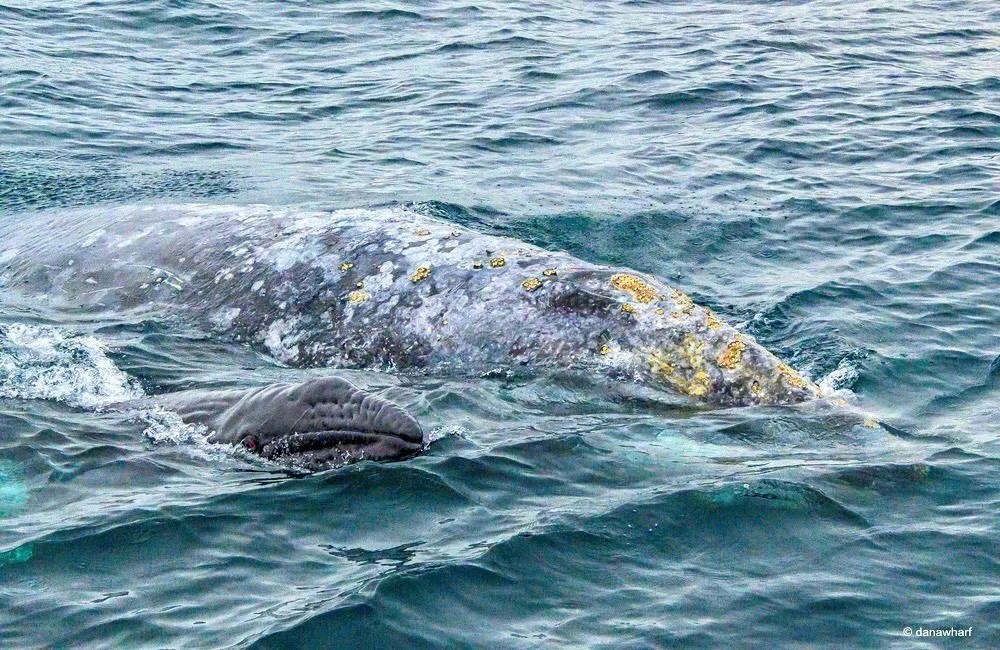What are the Predators of a Gray Whale?

Gray whales are majestic creatures that can be found in the Pacific Ocean, migrating from the cold waters of Alaska to the warm lagoons of Baja California. These gentle giants can grow up to 50 feet in length and weigh up to 40 tons. Despite their size, gray whales have predators that they must constantly be aware of during their long migration journey. In this article, we will explore the predators of a gray whale and how they impact the population of these magnificent creatures.
The Natural Predators of a Gray Whale
Killer Whales
Killer whales, also known as orcas, are the main predators of gray whales. These highly intelligent and social animals are known to hunt in pods and have been observed attacking gray whales during their migration. Orcas are known to target gray whale calves, as they are easier to catch and kill. They use their powerful jaws and teeth to attack and kill the young gray whales, often separating them from their mothers.
Sharks
Sharks are also natural predators of gray whales, although they are not as common as killer whales. Sharks are opportunistic hunters and will attack a gray whale if given the chance. They are known to target injured or sick gray whales, as well as newborn calves. Sharks have been observed attacking gray whales by biting their fins and tails, causing severe injuries that can lead to death.
Polar Bears
Polar bears are another natural predator of gray whales, although they are not as common as killer whales or sharks. These large bears are known to hunt for food along the coast of Alaska, where gray whales migrate from. They have been observed attacking gray whales that are close to the shore, using their powerful jaws and claws to kill them. However, polar bears are not strong enough to take down a fully grown gray whale and will usually target calves or injured whales.
Human Impact on Gray Whale Predators
Whaling
One of the biggest threats to gray whales and their predators is whaling. In the 19th and 20th centuries, gray whales were heavily hunted for their oil, meat, and bones. This led to a significant decline in the gray whale population and also impacted the predators that relied on them for food. Killer whales, in particular, were affected by whaling as they also became targets for their oil and meat.
Fishing Gear
Fishing gear, such as nets and lines, can also pose a threat to gray whale predators. Killer whales and sharks can become entangled in fishing gear, which can lead to injuries or even death. This can also impact the gray whale population, as their predators may not be able to hunt and feed on them.
Pollution
Pollution in the ocean can also have a negative impact on gray whale predators. Chemicals and plastics can contaminate the food sources of killer whales and sharks, making them sick or even causing death. This can also lead to a decrease in the population of these predators, which can have a ripple effect on the entire ecosystem.
The Role of Dana Wharf Whale Watching in Protecting Gray Whales and Their Predators

Dana Wharf Whale Watching is a company that offers whale watching tours in Dana Point, California. They are committed to protecting the gray whale population and their predators by educating the public and promoting conservation efforts. Here are some ways that Dana Wharf Whale Watching is helping to protect gray whales and their predators:
Education and Awareness
Dana Wharf Whale Watching provides educational tours that teach people about the importance of gray whales and their predators in the ecosystem. They also educate the public about the threats that these animals face and how they can help protect them.
Responsible Whale Watching
Dana Wharf Whale Watching follows responsible whale watching guidelines to ensure that their tours do not harm or disturb the gray whales and their predators. This includes keeping a safe distance from the animals and not approaching them too closely.
Supporting Conservation Efforts
Dana Wharf Whale Watching also supports conservation efforts by donating a portion of their profits to organizations that work to protect gray whales and their predators. They also participate in beach cleanups and other conservation initiatives.
The Impact of Gray Whale Predators on the Population
The predators of gray whales play a crucial role in maintaining a healthy population of these animals. Without predators, the gray whale population could become overpopulated, leading to competition for resources and potential harm to the ecosystem. However, the decline in the population of gray whale predators, such as killer whales, can also have a negative impact on the ecosystem. This is why it is important to protect both gray whales and their predators.
Gray whales have several natural predators, including killer whales, sharks, and polar bears. Human activities, such as whaling, fishing gear, and pollution, also pose a threat to these predators and the gray whale population. It is essential to protect both gray whales and their predators to maintain a healthy ecosystem. Companies like Dana Wharf Whale Watching are playing a crucial role in educating the public and promoting conservation efforts to protect these magnificent creatures and their predators. By working together, we can ensure the survival of gray whales and their predators for generations to come.
